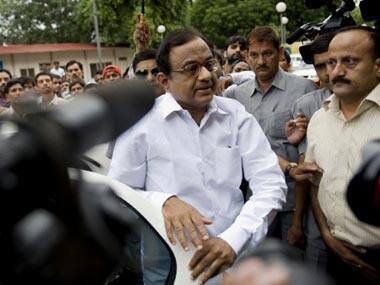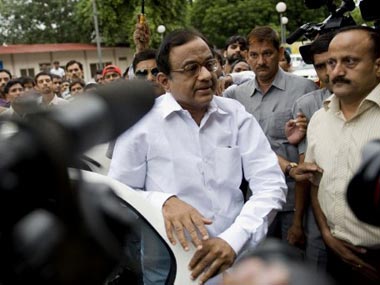Finance Minister Palaniappan Chidambaram, who has often been locked in grim debate with the Reserve Bank of India governor Duvvuri Subbarao on the growth-inflation dynamic, appears to be finally preparing a battle plan to rein in the ballooning current account deficit (CAD). RBI has often said CAD is one the biggest threats to financial stability.
If Chidambaram’s comments during an interview to The Times of India and at a press conference on 31 July are any indication, the FM is now beginning to focus on the other aspects of the CAD issue in a bid to bring the deficit down.
Chidambaram has told ToI that the government was looking to some more “import compression”, specifically relating to goods which could be produced locally or were in the nature of luxury items. In other words, the FM was now looking at clamping down on luxury goods imports by imposing higher customs duty on them and on goods which can be made locally.
[caption id=“attachment_1000341” align=“alignleft” width=“380”]
 AFP[/caption]
AFP[/caption]
On 31 July, the day he completes a year in office, the FM also said other steps to finance the CAD were in the offing, among them a significant liberalisation of the foreign direct investment (FDI) regime and asking some state-run firms to raise funds from overseas. Importantly, Chidambaram promised to addressed the twin deficits and said the ‘red line’ of 4.8 percent for the fiscal deficit of FY14 would not be breached under any circumstances.
The FM’s comments came a day after the RBI undertook its first quarter review of the Annual Policy for 2013-14, where the central bank stood its ground and refused to buckle under pressure and effect any cut in key rates, and also pointed to the CAD as a “daunting structural risk factor” which had been well above the sustainable level of 2.5 percent of GDP for three years in a row. In fact, RBI also stressed on the need for the government to seize the opportunity created by the RBI’s mid-July liquidity tightening moves to stem the rupee slide and put in place policies to bring CAD down to sustainable levels.
RBI’s position is that while headline inflation had moderated and growth was sputtering, leading to a case for monetary easing, the turbulence in the foreign exchange market has forced the central bank to keep rates on hold until the rupee stabilized.
So far, much of the government’s focus in terms of reining in the CAD had been focused around gold imports. To curb import demand, import of gold on consignment basis was restricted on 4 June and customs duty was raised on 5 June.
But experts say while gold imports were rightly attacked, there were other equally important areas the government needed to look at.
In an exclusive interview with Entrepreneur magazine and Firstpost, Export-Import Bank of India chairman and managing director TCA Ranganathan made a strong case for manufacturing and local production of several items, including high-technology capital goods, on the same lines as what Chidambaram now says.
Ranganathan said while gold was imported because it was not produced in the country, there were several items which were being imported which could be produced in India.
“Gold is not produced in India. If it is imported, you’re importing an item which is not being produced. But what about the items you can produce? If you see the CAD, the total deficit even today is about $75 billion. Our imports of technology goods is over $90 billion. So we would not have a problem if we had produced these goods and could also have exported them,” Ranganathan said, emphasizing the need for India to focus on high-technology manufacturing as a key measure to cut down the CAD.
Ranganathan also added that India’s luxury and high technology goods are increasing because while India does not produce such goods, the aspirations of the population have been increasing, leading to higher demand for such imports. This has caused the CAD to explode, he pointed out.
Significantly, alongside Chidambaram’s plans, commerce minister Anand Sharma also announced measures to boost dwindling exports, which included hiking the interest subvention to 3 percent from 2 percent and extending it to newer sectors.
While Chidambaram has not spelt out which luxury goods he would want to focus on, the decision could not have come a day too late. But aside of higher customs duty, what Chidambaram would need to also push is to push manufacturing by removing the structural bottlenecks in the system.
The Confederation of Indian Industry (CII) has already called for a special fast-track dispensation for clearing 100 largest projects on a ‘mission mode’. This needs to be taken up urgently if a truly holistic approach to reducing CAD has to be drawn up. Needless to say, India Inc must also walk the talk.
It’s only a big push to high-technology manufacturing which will ultimately help ease the CAD and also create a multiplier effect across the economy which only services cannot create. The sooner this beleaguered government understands it, the better for India.
Sourav Majumdar has been a financial journalist for over 18 years. He has worked with leading business newspapers and covered the corporate sector and financial markets. He is based in Mumbai.
)